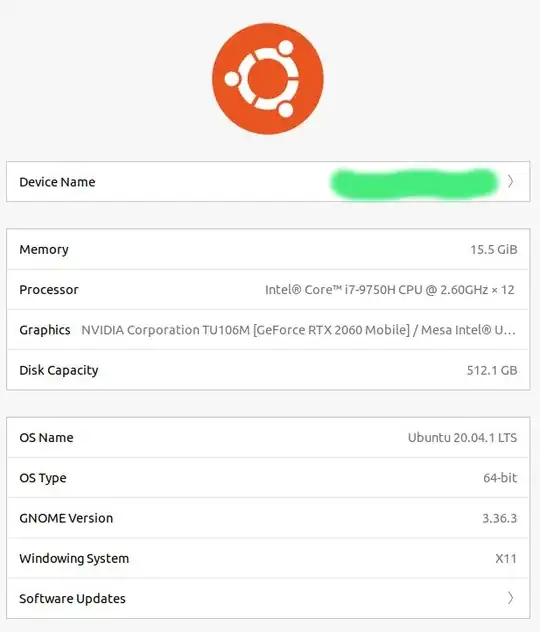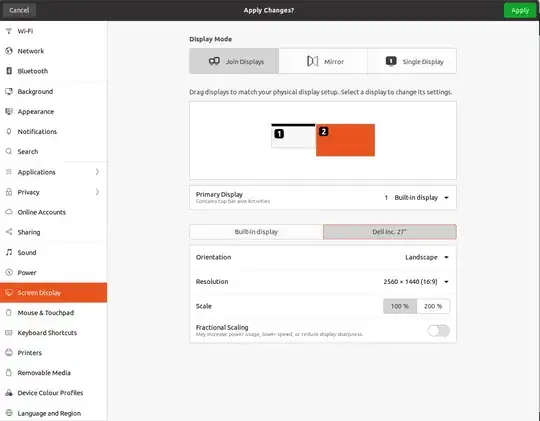I have never used a secondary display with Ubuntu before.
For the record, my hardware is Acer Predator Helios 300 laptop. Here is the About page in settings
I have a Dell 27" external monitor that I am connecting with a HDMI cable.
Here's how my settings screen looks like
So, it seems that the system is detecting the monitor, but my monitor says it does not read any signal from HDMI and goes to sleep after a few minutes.
As I was not the first person to come across this problem, my search turned out several of the previous questions.
- From this question , I figured out I needed to install nvidia drivers, and so I did following this guide . (Not sure how I lived without this before. My video resolution is much better now)
- From this question and this question , I realized I could use
xrandrto troubleshoot the display, so, I installed it.
Here's some related outputs from this
xrandr | grep connected
eDP-1 connected primary 1920x1080+0+0 (normal left inverted right x axis y axis) 382mm x 215mm
DP-1-0 disconnected
DP-1-1 disconnected
HDMI-1-0 connected 1920x1080+0+0 600mm x 340mm
and
xrandr | grep "*"
1920x1080 144.03*+ 60.02 60.01 59.97 59.96 59.93
1920x1080 60.00* 59.94 50.00
I also have to say at the time of running the above commands, the Display Mode is set to Mirror instead of Join Displays. I am unable to Apply Join Display mode because the confirmation modal dialogue appears in the second screen which is not getting the signal.
From the outputs, it seems both displays have the same resolution of 1920x1080, but have a different frame rate. I am not sure if that is the problem and how to proceed from here. I appreciate any responses.
I tried running
xrandr --output HDMI-1-0 --mode 1920x1080 --rate 144.03
but it did not help. I don't think it was supposed to, but I tried it anyway.

